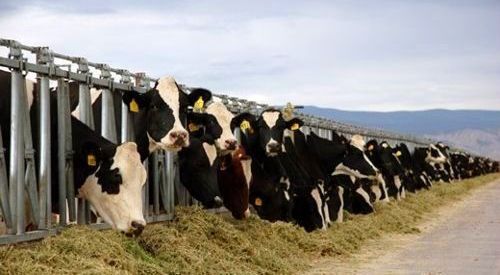The 2013 Global Food Policy Report released by International Food Policy Research Institute (IFPRI) on March 12 reviews major food policy developments and trends from the past year, documents emerging issues, examines key challenges and opportunities, describes the rising political commitment to food and nutrition security, and sets an agenda for action for 2014 and beyond.
In particular, it calls for ending hunger and undernutrition by 2025.
What is the problem?
Persistent hunger and undernutrition. According to the Food and Agriculture Organization of the United Nations (UN FAO), 842 million people – or one in eight people worldwide – go hungry every day. And more than 2 billion people suffer from “hidden hunger”, or a shortage of essential micronutrients, such as iron, vitamin A and zinc.
Why is it important to revisit this problem now?
With less than two years to go, the deadline for achieving the Millennium Development Goals is fast approaching. Although the world has made some headway in reducing hunger since the early 1990s, progress in halving hunger is not on track. Much work still must be done. The fight to end hunger and undernutrition must continue beyond 2015 as a key priority.
Why should ending hunger and undernutrition by 2025 be a development priority?
Discussions of the post-2015 development agenda have focused on the goal of eliminating extreme poverty by 2030. But it’s not possible to fight poverty without simultaneously taking steps to reduce hunger and undernutrition. Hunger and undernutrition cause and perpetuate poverty, negatively affect health, and have social and economic costs. Undernutrition limits people’s educational achievements and productivity, a result that in turn checks economic growth. On the flip side, eliminating hunger and undernutrition can lead to significant economic gains.
Studies from Ethiopia, India, and Nigeria show that every US $ 1 invested in reducing child stunting – an indicator of undernutrition – generates between $ 12 and $ 34 in economic returns. We should, thus, aim to eliminate hunger and undernutrition by 2025.
What examples can we learn from?
Countries such as Brazil, China, Thailand, and Vietnam have dramatically reduced hunger and undernutrition, suggesting that it could be realistic to reach zero hunger and undernutrition by 2025. These countries implemented agriculture-led, social protection-led, and/or nutrition intervention-led strategies and reaped the benefits.
Since 1990, China has cut the prevalence of undernourishment by nearly half, from almost 23 to 11 percent. China and Vietnam are on pace to virtually eliminate hunger by 2025, while Brazil and Thailand have already done so. Other developing countries can learn from these experiences as they chart their own paths to a food- and nutrition-secure future.
Ending hunger and undernutrition will require a mix of agricultural, social protection-based and nutritional strategies. In Africa, south of the Sahara, agriculture will play a key role. In Asia, North Africa, and the Middle East, growth in agricultural and rural non-farm activities could help reduce poverty. In Eastern Europe and Latin America, targeted nutrition and social protection programs could help eliminate hunger and undernutrition.
How can we more quickly reduce hunger and undernutrition?
The focus should be on developing sustainable, people-focused goals with clear targets and timelines for ending hunger and undernutrition by 2025. In order to achieve this goal, it will be crucial to:
- Promote country-driven, context-specific, and evidence-based strategies. National investment priorities must support national strategies, policies, and accountability mechanisms aimed at eradicating hunger and undernutrition.
- Build on evidence and past experiences such as those from Brazil, China, Thailand, and Vietnam.
- Share ideas. More knowledge sharing can provide lessons learned and create a “snowball effect” for positive changes and innovations.
- Enhance and expand partnerships. Linking national governments with civil society, donors, and the private sector is a way of committing resources to food and nutrition security in a holistic framework.
It’s time to set our sights on a new target: ending hunger and undernutrition by 2025. This goal is achievable, and it will play a key role in reducing poverty worldwide.



















